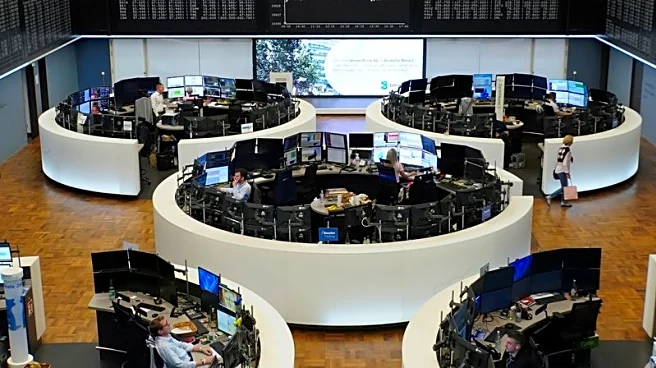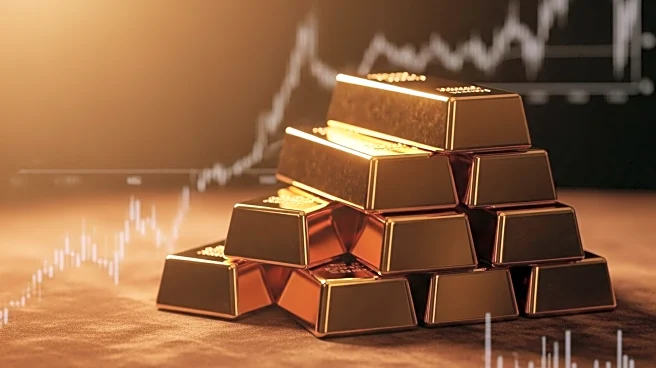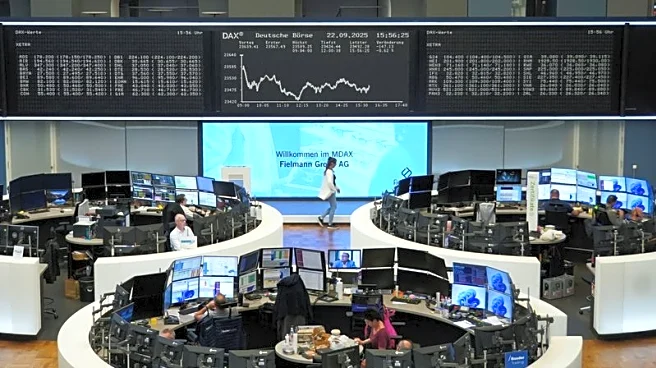What's Happening?
Gold prices have reached new record highs, driven by significant inflows into gold exchange-traded funds (ETFs). On September 19, ETF inflows hit their highest daily level since January 2022, with 861,000 ounces added, bringing total holdings to 95.8 million ounces. This surge follows a recent 25 basis point rate cut by the Federal Reserve, which initially caused a pullback in gold prices. However, renewed momentum has emerged, largely fueled by ETF investments. Analysts from BMO Capital Markets suggest that the ongoing rate-cutting cycle presents a positive risk-reward scenario for gold prices moving into the fourth quarter. Gold is currently trading at $3,753 per ounce, marking a 42.75% increase year-to-date.
Why It's Important?
The rise in gold prices reflects broader economic trends and investor sentiment regarding monetary policy. As the Federal Reserve continues to cut interest rates, investors are increasingly turning to gold as a hedge against potential inflation and currency devaluation. This trend underscores the diminished influence of U.S. real rates on gold, with the weakening U.S. dollar further contributing to the metal's price rally. The sustained interest in gold investment highlights its role as a safe haven asset amid geopolitical and macroeconomic uncertainties. Stakeholders in the gold market, including investors and mining companies, stand to benefit from these developments.
What's Next?
Federal Reserve Chair Jerome Powell is scheduled to deliver a speech on the economic outlook, which may provide further insights into future monetary policy decisions. Analysts anticipate continued interest rate cuts, which could sustain the upward trajectory of gold prices. Metals Focus, a UK market consultancy, predicts that buying on dips will persist, potentially driving gold to new all-time highs well into 2026. The market remains supportive of gold investment, even with slightly more hawkish guidance expected for 2026-2027.
Beyond the Headlines
The ongoing rally in gold prices may have broader implications for global financial markets, influencing investment strategies and asset allocation. As gold becomes increasingly attractive, it may impact the demand for other commodities and financial instruments. Additionally, the geopolitical landscape, including tensions and uncertainties, could further bolster gold's appeal as a stable investment option.












